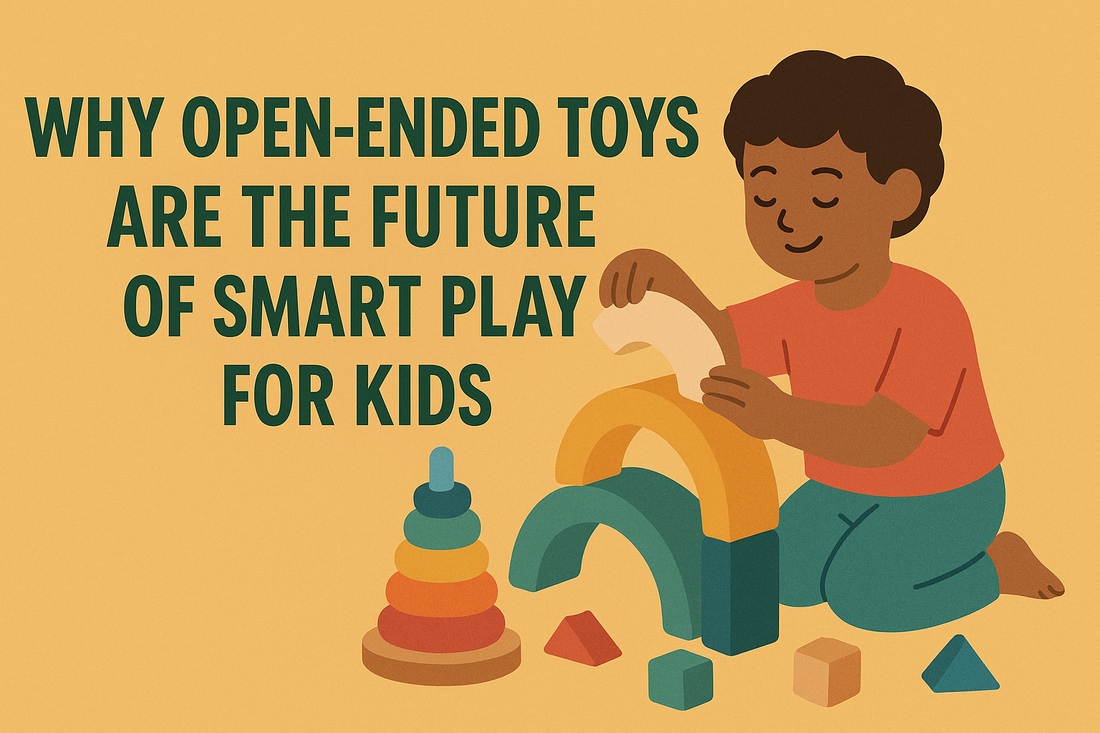
Why Open-Ended Toys Are the Future of Smart Play for Kids
Share
In today’s world of screen overload, flashing gadgets, and scripted apps, what if the smartest toy you can give your child has no buttons, no lights—and no rules?
Welcome to the world of open-ended toys—the timeless, imagination-powered play tools that are redefining how children learn, grow, and explore.
What Are Open-Ended Toys?
Open-ended toys are toys that can be played with in multiple ways, depending on how the child imagines them. There’s no fixed purpose, no one “right” way to play.
Examples include:
- Wooden blocks
- Play silks and scarves
- Magnetic tiles
- Animal figurines
- Clay and playdough
- Reusable building sets like WonderBlocks™ or ZooCrew™
Unlike digital games or battery-operated toys that follow a script, open-ended toys let children lead the play. One day, a block is a bridge; the next day, it’s a phone or a spaceship. The possibilities are as limitless as the child’s imagination.
Why It Matters: Smart Play for Smarter Kids
Research shows that the type of toy matters—not just how long kids play with it.
According to a study in the Early Childhood Education Journal, open-ended toys help children engage in richer, more creative, and more focused play. They promote problem-solving, critical thinking, language development, and even emotional regulation. (Trawick-Smith et al., 2015)
When children create their own worlds using open-ended toys, they are:
- Practicing cognitive flexibility
- Strengthening fine motor skills
- Building communication and storytelling skills
- Learning patience, focus, and perseverance
The Problem with “Single-Function” Toys
Toys with buttons, sounds, or screens often do the entertaining for the child. They flash, beep, and talk—leaving the child as a passive participant. Over time, this can reduce attention span and encourage dependency on external stimulation.
Many modern toys also come with predefined narratives, limiting the child’s role to merely “following along.”
In contrast, open-ended toys put the child in the director’s seat. They ask, “What do you want this to be?”
Why Every Home Needs Open-Ended Toys
Here’s what sets them apart:
| Benefit | Why It Matters |
|---|---|
| Limitless Imagination | Children invent new uses and stories every time |
| Longer Engagement | More likely to hold attention than scripted toys |
| Affordable & Sustainable | Many are reusable and grow with the child |
| Promotes Independence | No instructions or adult guidance needed |
| Reduced Screen Time | More meaningful engagement leads to less reliance on gadgets |
“Children need the freedom and time to play. Play is not a luxury. Play is a necessity.” – Kay Redfield Jamison
Tips for Parents: Getting Started
You don’t need to buy dozens of new toys. Start simple:
- Clear a low shelf with just 4–6 open-ended items at a time.
- Let your child lead the play. Don’t jump in with suggestions.
- Ask open-ended questions like “What are you building?” or “Who lives in that tower?”
- Rotate materials weekly to keep things fresh.
Pro tip: Even everyday items like cardboard boxes, fabric scraps, or kitchen utensils can become open-ended treasures in the right hands!
At Tinkido, we believe in the power of imagination. That’s why our products—from our WonderBlocks™ to ZooCrew™ animal figurines—are designed to inspire open-ended, screen-free play that grows with your child.
We combine high-quality materials with child-led design principles to create toys that are as flexible and expressive as the children who play with them.
Open-ended toys are more than just playthings—they’re tools for thinking, storytelling, and growth. In a world filled with overstimulation, they give children the gift of slower, deeper, and more meaningful play.
As parents, educators, and caregivers, embracing open-ended toys means giving children the space and materials to be curious, confident, and creative—on their own terms.
Ready to bring smart play into your home?
Browse our curated collection of open-ended toys at Tinkido.com and join the movement to raise imaginative, screen-free kids.
